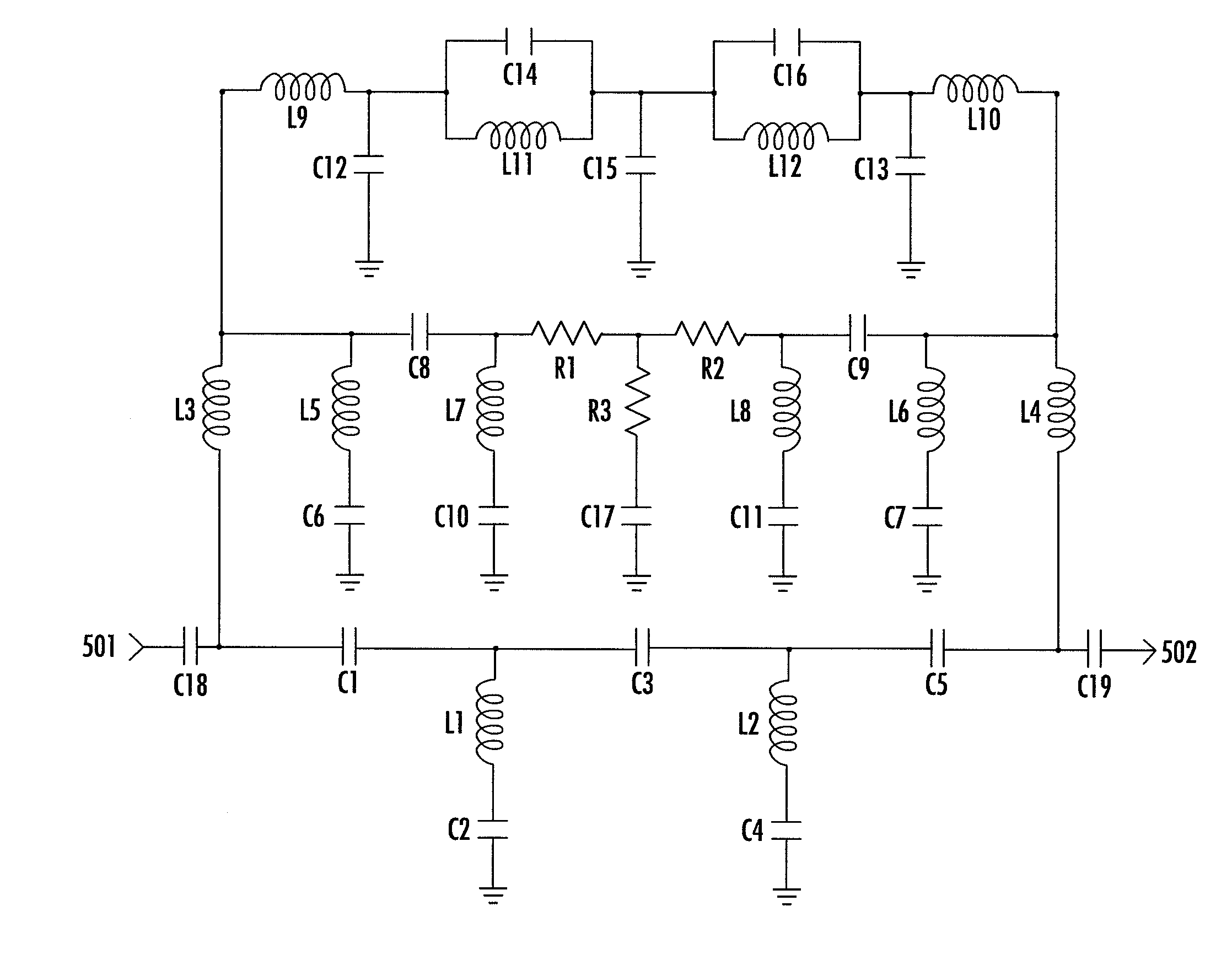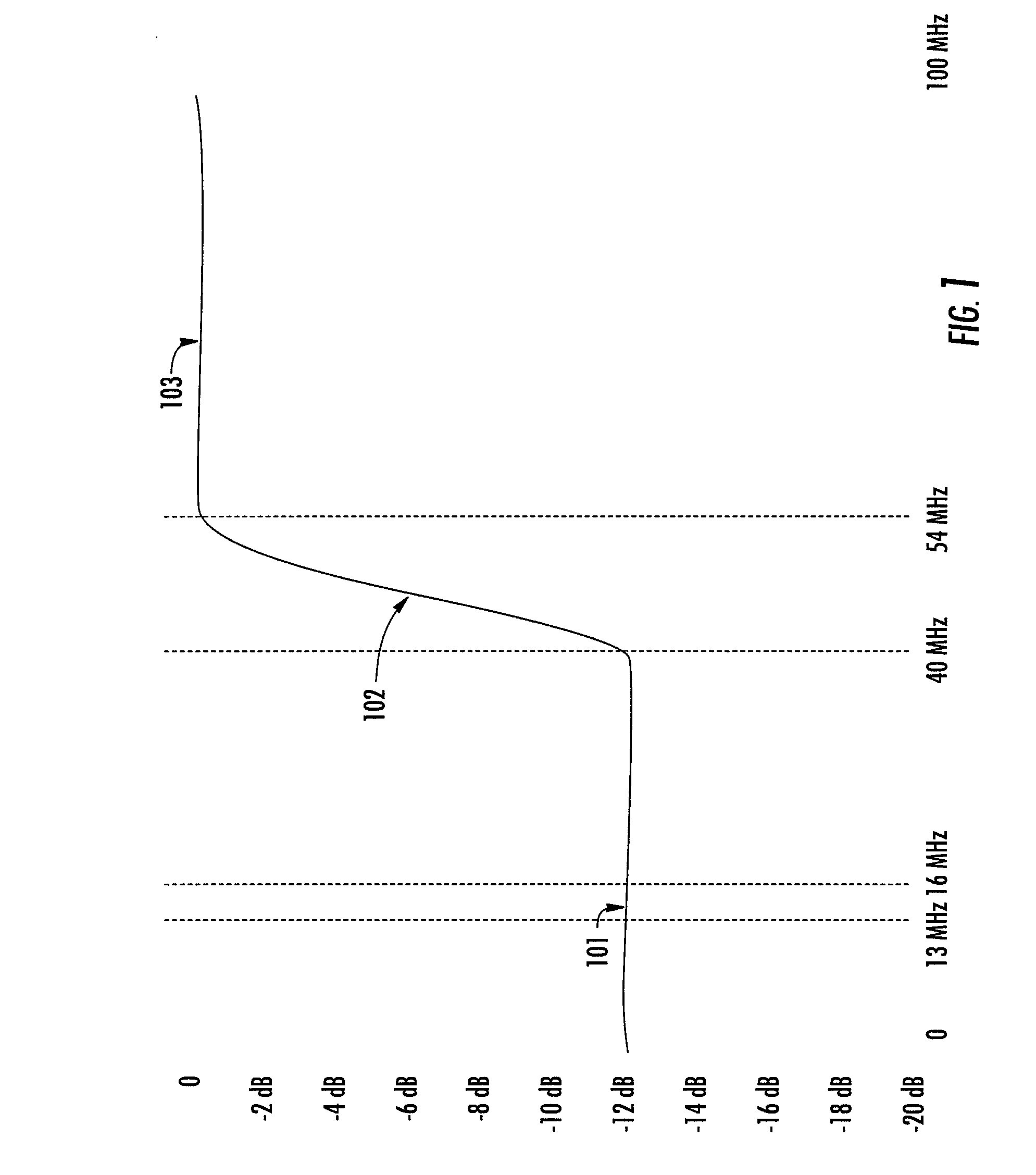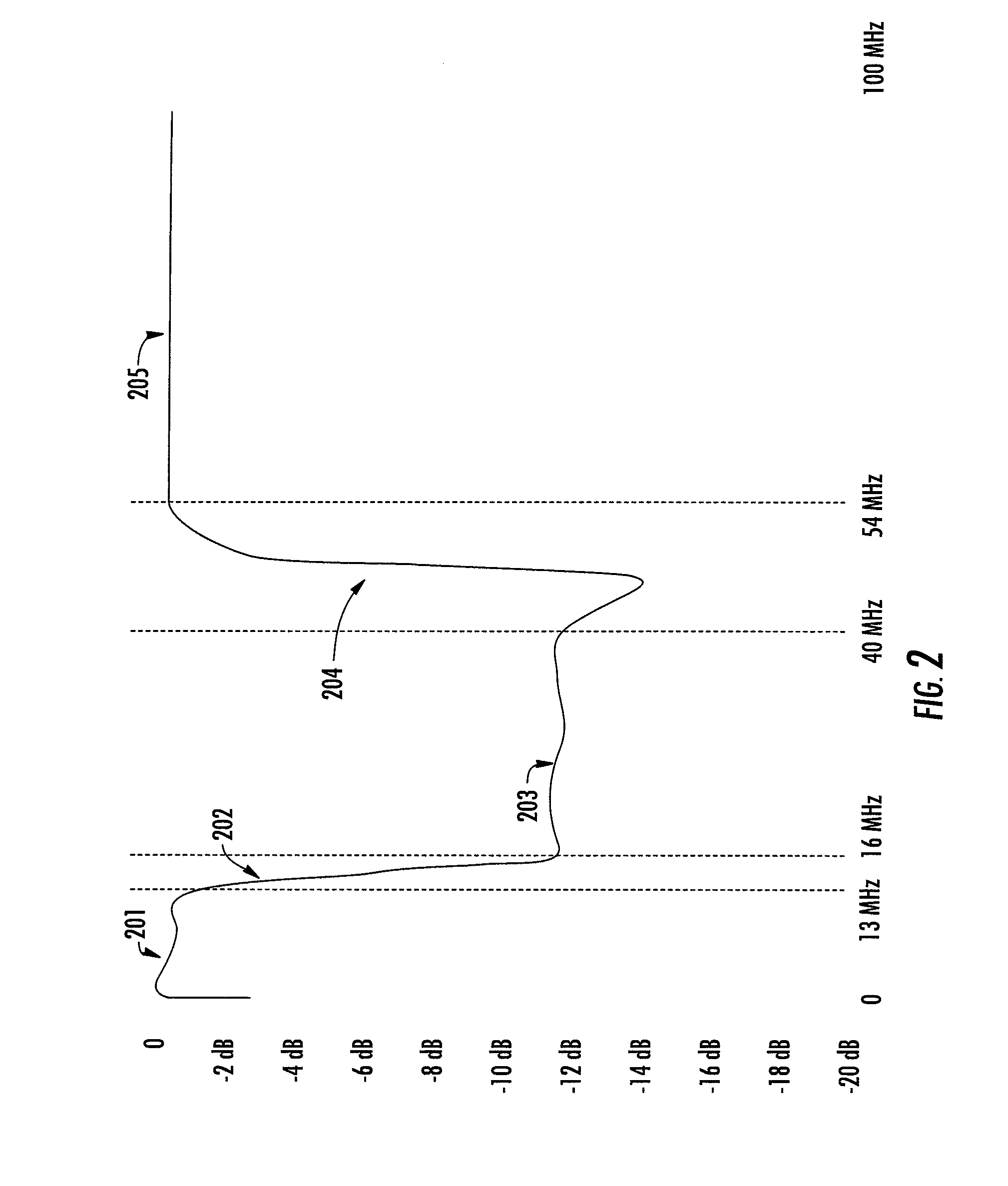Low-Pass Step Attenuator
a step attenuator and low-pass technology, applied in waveguide type devices, two-way working systems, television systems, etc., can solve the problems of inconvenient use, disadvantages of high-pass filters, and inability to provide uniform attenuation for a range of frequencies, and achieve the effect of higher uniform attenuation
- Summary
- Abstract
- Description
- Claims
- Application Information
AI Technical Summary
Benefits of technology
Problems solved by technology
Method used
Image
Examples
Embodiment Construction
[0020]The present invention now will be described more fully hereinafter with reference to the accompanying drawings, in which some, but not all embodiments of the inventions are shown. Indeed, these inventions may be embodied in many different forms and should not be construed as limited to the embodiments set forth herein; rather, these embodiments are provided so that this disclosure will satisfy applicable legal requirements. Like numbers refer to like elements throughout.
[0021]With reference to the drawings, in FIG. 1 there is shown a plot of insertion loss as a function of frequency in a prior art step attenuator. The vertical axis represents insertion loss in dB. The horizontal axis represents bandwidth from DC to 100 MHz. An attenuating portion of the bandwidth 101 shows flat attenuation of approximately 12 dB from DC to 40 MHz. A transition portion 102 exists from 40 MHz to 54 MHz. There is no attenuation in the high-pass portion 103 above 54 MHz.
[0022]FIG. 2 depicts a plot...
PUM
 Login to View More
Login to View More Abstract
Description
Claims
Application Information
 Login to View More
Login to View More - R&D
- Intellectual Property
- Life Sciences
- Materials
- Tech Scout
- Unparalleled Data Quality
- Higher Quality Content
- 60% Fewer Hallucinations
Browse by: Latest US Patents, China's latest patents, Technical Efficacy Thesaurus, Application Domain, Technology Topic, Popular Technical Reports.
© 2025 PatSnap. All rights reserved.Legal|Privacy policy|Modern Slavery Act Transparency Statement|Sitemap|About US| Contact US: help@patsnap.com



